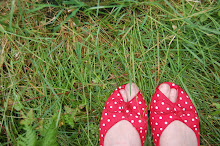
‘Good design costs no more than bad design’ -
Penguin founder Sir Allen LaneNow I know that
Penguin Books is not a visual arts publisher; however, in any discussion of books, art and design, the famous black and white bird does tend to pop up its cheeky little head.
Most people know the now-legendary story of how publisher Allen Lane, on returning to London from a weekend at the Devon home of Agatha Christie in 1934, having tried unsuccessfully to find something to read at Exeter station, suddenly realised there was a significant gap in the market for good quality but affordable paperback books. It was in fact Lane’s secretary who initially suggested Penguin as a “dignified but flippant” name for the new publishing company: Lane himself, who emphasised the critical importance of cover design from the start, devised an early version of the famous three-panel cover, and the office junior was sent to sketch the penguins at London Zoo for a logotype. Over the years, Penguin’s design was developed and refined under the direction of the German typographer Jan Tschichold during the 1940s and the Italian art director Germano Facetti in the 1960s.
Of course, today, we recognise Penguin as being synonymous with iconic design: Penguin mugs and tote bags can be purchased from the Tate Gallery; a Penguin exhibition was shown at the Design Museum in 2006; and in 2007 the company launched the inaugural
Penguin Design Awards dedicated to supporting the very best in emerging book design talent. In recent years, two eminently covetable new books dedicated to the beauty of Penguin books over the years, and if you're anything like me (ie. a geek about books in general, and book design in particular) I imagine you'll find them both very hard to resist:
 Penguin by Design: A Cover Story
Penguin by Design: A Cover Story (Allan Lane, 2005) is a comprehensive design history of seventy years of Penguin paperbacks. Author Phil Baines charts the development of Penguin’s distinctive design through an investigation of individual titles, artists and designers as well as typography (got to love that Gill Sans), and the famous Penguin logo itself. Lavishly illustrated, the book reveals not only how Penguin has established its identity through its cover design, but also how it has become a constantly-evolving part of the history of British visual culture, influencing the wider development of graphic design, typography, typesetting and illustration. Filled with intriguing snippets of information (apparently back in the day a Penguin paperback would set you back a mere sixpence - that’s 2.5p - which was then the price of a packet of 10 cigarettes) the book is also strangely evocative: perhaps because of the special place Penguin books (not to mention childhood Puffins) occupy in most of our hearts, flipping through these beautifully designed pages is a uniquely nostalgic and moving experience. You can buy it online
here.
 Seven Hundred Penguins
Seven Hundred Penguins (Penguin, 2007) makes an intriguing companion volume: a fascinating selection of seven hundred of Penguin’s most important and influential covers, ranging from the publisher’s earliest days to the end of the twentieth century. Selected by Penguin’s staff, the collection brings together everything from well-known design classics to unexpected and quirky treats - perfect coffee-table fodder. Buy it online
here.
If you want a taster of the kind of things this book has in store, Joe Kral has a fantastic flickr album of classic Penguin and Pelican covers to enjoy
here.

Perhaps inspired in part by the popularity of these two titles, Penguin have recently published
Penguin Celebrations, a selection of 36 of “the best books of their kind to be published in recent years” issued in covers inspired by the original, now iconic three-panel design. As with Penguin books of old, the series takes in fiction (orange), science (blue), mystery & crime (green), travel (pink), biography (blue) and essays (purple) - they are pretty hard to resist, even though they aren’t quite as nice as the originals.
And as if this wasn’t enough, other recent Penguin projects have included
My Penguin, a series of classic Penguin titles ranging from
Alice in Wonderland through to
Crime and Punishment with blank, “design it yourself” covers. Six bands(Razorlight, Goldspot, Dragonette, Johnny Flynn and Mr Hudson & The Library, in case you’re wondering) got the ball rolling by designing their own unique covers, which you can view on the My Penguin
website. There is also a gallery of reader’s own cover designs (sadly, submissions are now closed) which you can browse
here.
And you've got to love the recently-issued series of classic adventures with Boy's Own-inspired covers designed by Coralie Bickford-Smith. You can check the full set out
here on
Première de couverture.

Given all this it’s perhaps unsurprising that Penguin books have become a key source of inspiration for artist Harland Miller. His recent monograph
International Lonely Guy (Rizzoli, 2007) brings together a series of works inspired by literature, and by Penguin cover designs in particular, together with a series of essays and interviews with the artist by both fans and critics including Jarvis Cocker, Sophie Fiennes, Gordon Burn and Ed Ruscha. Nostalgic, bitter and witty by turns, Miller’s book is a million miles away from the Penguin mugs in the Tate Gallery bookshop, but what remains evident throughout is the artist’s intense interest in language and literature: paintings are rife with play-on-words, puns and textual experimentations combined with reappropriations of cover and author images (Ernest Hemingway, featuring in a painting entitled
I'm So Fucking Hard is perhaps especially memorable) in a contemporary riff on Pop art. Buy it online
here.
cool penguin collection courtesy of eifon. cute penguin picture by lord biro. both photos licensed under creative commons.







